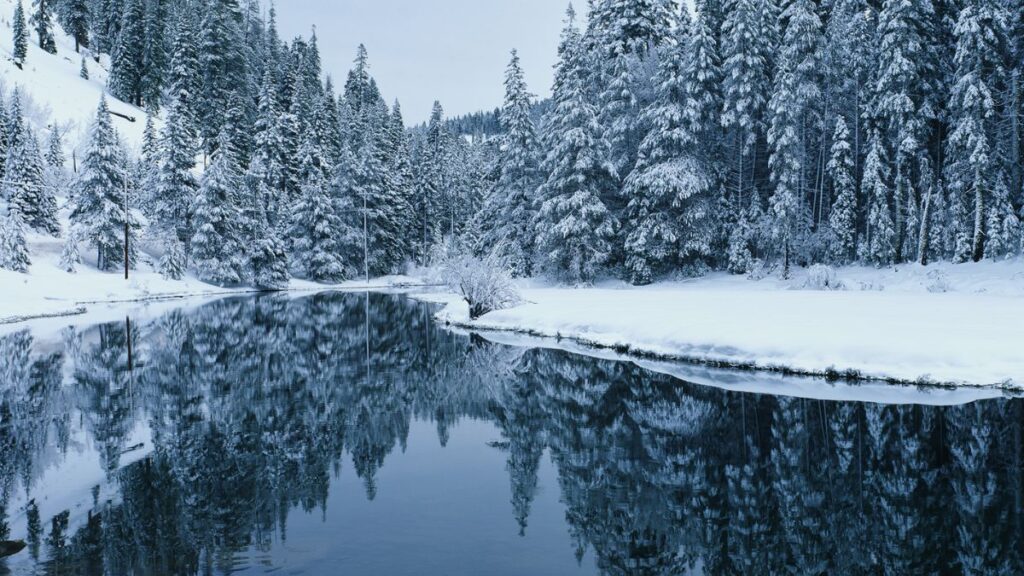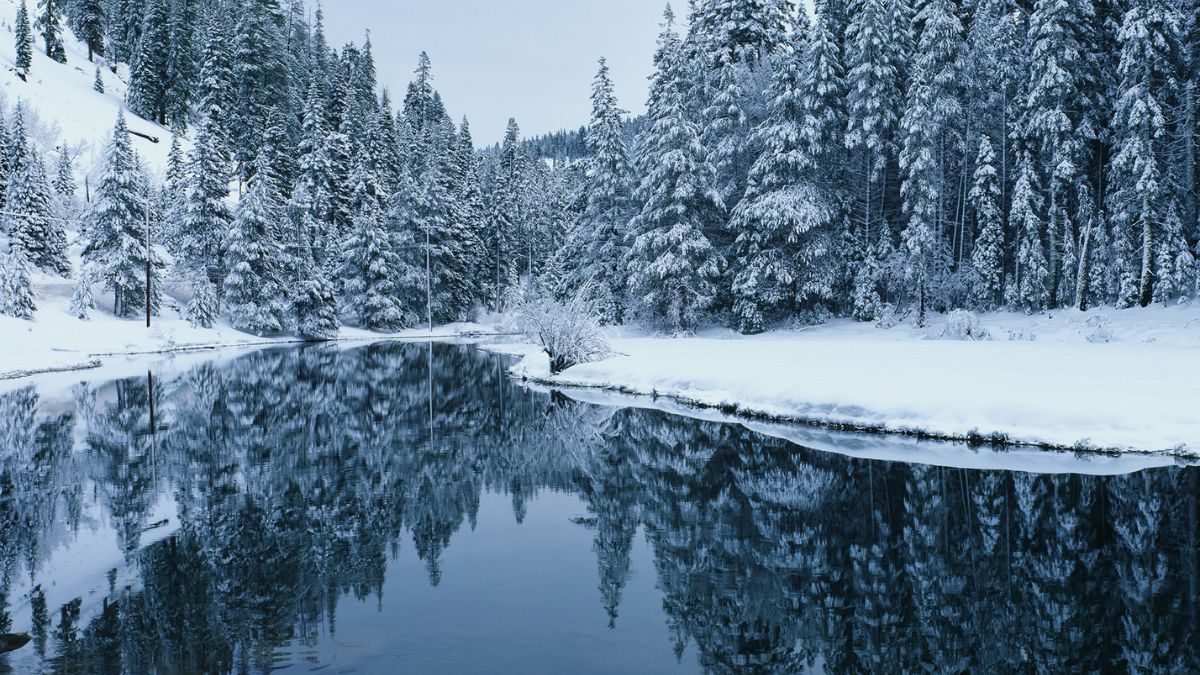Yes, it does snow in Lake Tahoe. The region is known for its significant snowfall in winter. The combination of the lake’s elevation, proximity to the Pacific Ocean, and the presence of the Sierra Nevada mountains creates an ideal environment for abundant snow accumulation. On average, Lake Tahoe receives around 300 to 500 inches of snow annually, depending on the location and elevation.
The heavy snowfall in Lake Tahoe makes it a winter wonderland for outdoor enthusiasts. The picturesque scenery and snow-covered landscape attract visitors from all over, making Lake Tahoe a premier winter tourism destination.
Lake Tahoe is a breathtakingly beautiful freshwater lake nestled in the Sierra Nevada Mountains. It is a popular destination for outdoor enthusiasts and nature lovers. Known for its pristine blue waters, stunning alpine scenery, and world-class ski resorts, Lake Tahoe attracts visitors worldwide.

One question that often arises among travelers is whether or not it snows in Lake Tahoe. Explore the snowfall patterns in Lake Tahoe with us, providing you with a comprehensive answer to this intriguing question.
Location Overview
Lake Tahoe is a large freshwater lake spanning the border between California and Nevada in the United States. It is one of the largest alpine lakes in North America and is renowned for its stunning natural beauty and recreational opportunities.
Geographically, Lake Tahoe stretches approximately 22 miles in length and 12 miles in width, with a total shoreline of 72 miles. The water in Lake Tahoe is exceptionally clear and known for its striking blue color, making it a visually captivating destination.
The region surrounding Lake Tahoe is a popular vacation spot attracting millions of visitors yearly. It uniquely blends picturesque landscapes, outdoor activities, and a vibrant resort and entertainment scene.
Lake Tahoe provides various outdoor recreational opportunities throughout the year. In addition to winter sports such as skiing and snowboarding, visitors can enjoy hiking, biking, boating, fishing, and swimming during summer.
The region’s natural beauty and diverse array of activities and amenities make Lake Tahoe a popular destination for nature lovers, adventure seekers, and those looking for a scenic getaway.
Geography and Climate of Lake Tahoe
Lake Tahoe is situated in the Sierra Nevada mountain range, which experiences diverse weather patterns. The region’s elevation is crucial in determining its climate and the type of precipitation it receives.
The lake itself sits at an elevation of around 6,225 feet, while the surrounding peaks rise to over 10,000 feet. This high elevation contributes significantly to the snowfall potential in the area.
To understand the snowfall in Lake Tahoe, it is essential to delve into the region’s climate. The climate of Lake Tahoe is characterized by cold winters and mild summers. The area experiences a Mediterranean climate, with warm, dry summers and chilly, snowy winters.
Historical Snowfall Record
Lake Tahoe has a long history of significant snowfall. Lake Tahoe is known for its impressive snowfall averages, which can vary depending on the specific location and elevation within the region. Lake Tahoe receives between 300 to 500 inches of snowfall annually.
One memorable snowfall event was in the winter of 2016-2017. The residents saw an exceptionally heavy snowfall season in Lake Tahoe, with some areas recording over 700 inches of snow. This was an unusually high amount and set records for snowfall in the region.
Winter Season & Snowfall Pattern
Lake Tahoe is well-known for its snow-covered landscapes, making it a sought-after destination for winter sports enthusiasts. The region receives substantial snowfall during the winter months, turning it into a winter wonderland.
On average, Lake Tahoe receives around 125-150 inches of snow each year, with some areas around the lake witnessing even higher accumulations. The snowfall usually starts in November and continues through April, providing an extended winter season for outdoor activities.
Locations to Enjoy Snow
Lake Tahoe offers numerous locations where visitors can enjoy the snow during the winter months. Whether you are interested in skiing, snowboarding, snowshoeing, or simply taking in the picturesque winter scenery, here are some popular spots to consider:
- Heavenly Mountain Resort
Located in South Lake Tahoe, Heavenly is one of the largest and most renowned ski resorts in the region. It offers a wide range of terrain for all skill levels, breathtaking views of the lake, and various winter activities.
- Northstar California Resort
Situated near the town of Truckee, Northstar California Resort is a premier destination for winter sports. With its well-groomed slopes, terrain parks, and vibrant village atmosphere, it caters to skiers and snowboarders of all abilities.
- Squaw Valley Alpine Meadows
Host of the 1960 Winter Olympics, Squaw Valley Alpine Meadows is a world-class resort known for its diverse terrain, challenging runs, and stunning alpine vistas. It offers a wide range of winter activities and attracts both casual visitors and avid skiers.
- Kirkwood Mountain Resort
Nestled in the Eldorado National Forest, Kirkwood Mountain Resort is renowned for its deep powder and challenging terrain. It provides a more secluded and adventurous experience for advanced skiers and snowboarders.
- Homewood Mountain Resort
Offering breathtaking views of the lake, Homewood Mountain Resort is a hidden gem known for its family-friendly atmosphere and diverse terrain. It provides a more laid-back and relaxed skiing experience.
- Donner Ski Ranch
Situated near Donner Lake, Donner Ski Ranch is a family-owned resort with a welcoming and low-key atmosphere. It offers a mix of beginner and intermediate slopes, making it a great option for families and beginners.
- Spooner Lake Cross-Country Ski Area
If you are interested in cross-country skiing or snowshoeing, the Spooner Lake Cross-Country Ski Area is a beautiful location. It features scenic trails through the snow-covered forest and offers rentals and lessons for beginners.
- Tahoe Meadows
Located on the Mount Rose Highway, Tahoe Meadows is a popular spot for snowshoeing and winter hiking. It provides access to scenic trails with panoramic views of Lake Tahoe and the surrounding mountains.
These are just a few examples of the many locations in Lake Tahoe where you can enjoy the snow. The region offers various winter activities and terrain to suit all preferences and skill levels.
Factors Influencing Snowfall
Several factors influence the amount of snowfall in Lake Tahoe. First and foremost is the availability of moisture from winter storms. The Pacific Ocean plays a vital role in supplying the necessary moisture for substantial snowfall.
Additionally, the temperature at different elevations affects the type of precipitation received, with higher elevations often experiencing colder temperatures, favoring snow over rain.
Another significant factor is the direction and intensity of the storm systems that approach the region. Some storms are more potent than others, bringing heavy snowfall and blizzard-like conditions.
The Lake Tahoe area is susceptible to both smaller, localized storms and larger regional storms that can impact the entire region.
Conclusion
With its cold winters and a healthy snowpack from the Sierra Nevada Mountains, Lake Tahoe receives abundant snowfall, turning it into a winter wonderland. The region’s snow-covered landscapes, world-class ski resorts, and a wide array of winter activities make it a top destination for snow enthusiasts.
So, if you are planning a winter getaway or seeking an adventure-filled vacation, consider Lake Tahoe and immerse yourself in the magic of snow-capped mountains and breathtaking alpine scenery.
